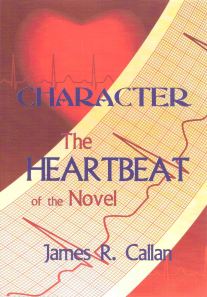Soon
after my first grandchild started walking, my daughter discovered the book How to Make your Children Mind without
Losing Yours. Oh, how well I remember that book from the days that very
same daughter challenged every request we made.
These
days, uncooperative characters are
proving to be my nemesis!
They
have minds of their own, utterly oblivious to the fact that I created them!!
But
seeing my daughter perusing that book again a couple of years later, now with
two adorable children to rein in, reminded me of the key lesson that I never
forgot from reading it:
Let your children experience the
consequences of their choices.
“So,
Kate,” I said to the heroine of my Port Aster Secrets series about this time
last year, “if that’s really the road you want to go down, guess what? You can
live with the consequences.”
And
they will be bad. Very bad. ~hee, hee,
hee~ (she said, in a sinister voice)
Yes,
as oftentimes happens with children, characters need to learn their lessons the
hard way.
The
harder the better for the reader. Wouldn’t you say?
So
I threw out my neat little story outline, and put my characters on the
therapist’s couch and had a serious heart-to-heart with each and every one of
them. Wow, was I surprised.
In
some cases, the emotional baggage that I thought was driving their inner
conflict wasn’t it at all! I had one character who wasn’t even who I thought he
was!
Needless
to say, finishing the series turned out to be quite an adventure. My hero and I
very nearly had a rough-and-tumble fistfight over the “consequences” I allowed
to befall Kate.
Now
I understand why writers who write by the seat-of-their-pants enjoy it so much.
Every
day is an adventure as you wait to see what happens next.
Of
course… I remember having an eerie feeling that I’d start losing my mind again
during the editing phase, but why worry about tomorrow when today has enough
trouble of its own?
As
it turned out, the editing phase wasn’t so bad, but just as my daughter
returned to the book with child number two, I’m having to do the same with my newest baby, ur, character.
Your
Turn: What lessons have you, or your
characters, learned from having to face the consequences of your actions?
P.S. Deadly Devotion, the first book in the Port Aster
Secrets mystery series, is available as a FREE download at all major online book
retailers.
SANDRA ORCHARD is an award-winning author of mysteries and romantic suspense with Revell Publishing and Harlequin’s Love Inspired Suspense imprint. A mother of three grown children, she lives in Niagara, Canada with her real-life-hero husband and writes full time…when not doting on her young grandchildren. Subscribe to Sandra’s newsletter to receive a subscriber-exclusive mini-novella. Learn more about Sandra’s books and bonus features, as well as writer helps, at www.SandraOrchard.com or connect at www.Facebook.com/SandraOrchard
Book Blurb:
Desperate Measures
The Final installment in the Port Aster Secrets mystery series officially releases June 2, 2015. However, some stores already have it on their shelves, and have begun shipping it.
Kate won’t be safe until all of Port Aster’s secrets are revealed
Researcher Kate Adams has finally pinpointed the supposed “miracle plant” that tore her family apart years ago. She’s certain that discovering its secrets is her only hope of solving the mystery surrounding her father’s disappearance. She’s willing to risk anything to find the truth, including her relationship with Detective Tom Parker. But with so many people in pursuit of the plant, going it alone might be a fatal mistake.
Award-winning author Sandra Orchard pulls out all the stops in this breakneck and breathtaking conclusion to the Port Aster Secrets series.










.jpg)


